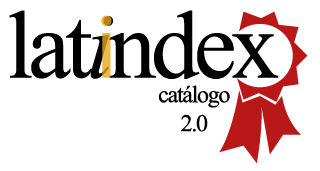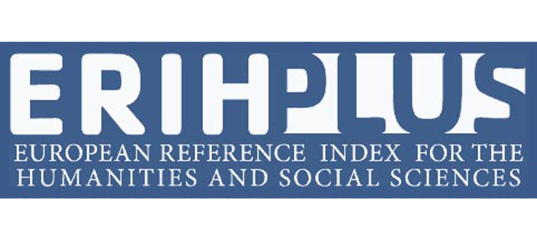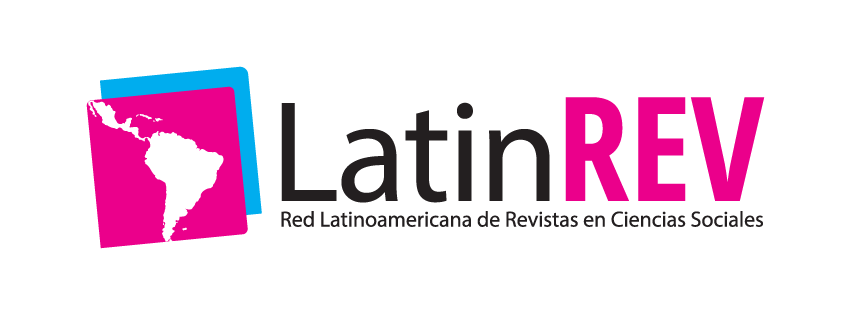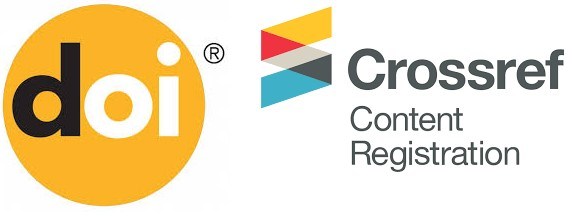Systematic Mapping of Supporting Tools in Data Mining Training
DOI:
https://doi.org/10.46480/esj.9.1.223Keywords:
Training, Learning, Tools, Data mining, Systematic mappingAbstract
Context: This study conducts a systematic mapping of tools used to support data mining training during the period from 2020 to 2025, recognizing the importance of learning techniques and computer tools in university education. Methodology: An analysis of existing literature was carried out, selecting 14 studies related to tools applied in theoretical teaching and practical application of data mining in the educational field. This process allowed the identification of 15 different tools used in training. Results: The research explored current trends in data mining training, offering a comprehensive perspective on educational practices, applied techniques/algorithms, and implemented technologies. The most effective tools for training in this field were highlighted. Conclusions: The study provides recommendations to optimize data mining training, thus contributing to the development of talent and knowledge in this area, which is crucial for the technological and economic growth of individuals and organizations.
Downloads
References
Abadi, M., Agarwal, A., Barham, P., Brevdo, E., Chen, Z., Citro, C., y Zheng, X. (2016). Tensorflow: aprendizaje automático a gran escala en sistemas distribuidos heterogéneos.
Alemán Viteri, S. B. (2021). "Análisis de sentimientos para Twitter con Vader y TextBlob". Revista Odigos, 2(3), 9–25. DOI: https://doi.org/10.35290/ro.v2n3.2021.494
Álvarez-Peralta, D. H., & Recalde-Varela, P. M. (2020). Optimización de precios en una empresa de retail utilizando la herramienta RapidMiner. Polo del Conoci-miento, 5(3), 92-104.
Babu, B., & Raj, A. (2020). "A Review of Data Mining Tools: Applications of Orange in Business Intelligence". Interna-tional Journal of Data Science and Analytics, 12(2), 213-220.
Buitinck, L., et al. (2016). "API Design for Machine Learning Software: Experiences from the Scikit-learn Project." Ma-chine Learning in Python, Data Mining and Knowledge Dis-covery, 30(2), 517-535.
Caicedo-Castro, I. (2023). Course prophet: a system for pre-dicting course failures with machine learning: a numerical methods case study. Sustainability, 15(18), 13950. DOI: https://doi.org/10.3390/su151813950
Caicedo-Castro, I., & Pardo, A. (2024). "Aplicación de técnicas de aprendizaje automático para la predicción de reprobación en cursos universitarios". Revista de Educación y Desarrollo, 43(1), 15-25.
Darad, S., & Krishnan, S. (2023). "Análisis de sentimiento de los datos de Twitter de COVID-19 utilizando modelos de aprendizaje profundo y aprendizaje máquina". Ingenius. Revista de Ciencia y Tecnología, 29, 108-117.
Fischer, C., Pardos, Z. A., Baker, R. S., Williams, J. J., Smyth, P., Yu, R., ... & Warschauer, M. (2020). Mining big data in educa-tion: Affordances and challenges. Review of research in education, 44(1), 130-160. DOI: https://doi.org/10.3102/0091732X20903304
Flores, V., Heras, S., & Julian, V. (2022). Comparison of predic-tive models with balanced classes using the SMOTE meth-od for the forecast of student dropout in higher education. Electronics, 11(3), 457. DOI: https://doi.org/10.3390/electronics11030457
Gil, O. G. (2023). Predicción de la presión de burbujeo utilizando aprendizaje automático. Revista Innovación y Software, 4(1), 204–218. DOI: https://doi.org/10.48168/innosoft.s11.a82
Gómez, M. J., Calderón, M., Sánchez, V., García Clemente, F. J., & Ruipérez-Valiente, J. A. (2022). "Large Scale Analysis of Open MOOC Reviews to Support Learners' Course Selec-tion". DOI: https://doi.org/10.1016/j.eswa.2022.118400
Grönberg, N., Knutas, A., Hynninen, T., & Hujala, M. (2021). "Palaute: An Online Text Mining Tool for Analyzing Written Student Course Feedback". IEEE Access, 9, 1-1. DOI: https://doi.org/10.1109/ACCESS.2021.3116425
Henry, F. (2018). Minería de Datos. ReciMundo, 339-349. DOI: https://doi.org/10.26820/recimundo/2.esp.2018.339-349
Hertzberg, J., Mundlos, S., Vingron, M., & Gallone, G. (2022). "TADA—a machine learning tool for functional annotation-based prioritisation of pathogenic CNVs". Genome Biology, 23(1), 67. DOI: https://doi.org/10.1186/s13059-022-02631-z
Huatangari, L. Q., Ríos, M. A. C., & Camones, R. T. H. (2023). Segmenting the eating behaviour of university students us-ing the K-means algorithm. Bulletin of Electrical Engineering and Informatics, 12(4), 2363-2371. Journal of Data Science and Analytics, 7(1), 29-44. DOI: https://doi.org/10.11591/eei.v12i4.4543
Khan, A., & Ghosh, S. K. (2021). Student performance analysis and prediction in classroom learning: A review of educa-tional data mining studies. Education and information technologies, 26(1), 205-240. DOI: https://doi.org/10.1007/s10639-020-10230-3
Kitchenham, B. and Charters, S. ``Guidelines for performing systematic literature reviews in software engineering,'' Engi-neering, vol. 2, p. 1051, Jan. 2007.
Kovar, J., & Šojat, M. (2021). "Applications of Orange in Big Data Analysis". Applied Artificial Intelligence, 35(4), 422-433.
Lee, C. A., Huang, N. F., Tzeng, J. W., & Tsai, P. H. (2023). AI-based diagnostic assessment system: Integrated with knowledge map in MOOCs. IEEE Transactions on Learning Technologies, 16(5), 873-886. DOI: https://doi.org/10.1109/TLT.2023.3308338
Lemmerich, F., & Voss, A. (2019). "Exploring Data with Orange: A User-Friendly Tool for Data Mining and Machine Learning".
Lizana, M. F. (2020). Ventajas de R como herramienta para el Análisis y Visualización de datos en Ciencias Sociales. Revista Científica de la UCSA, 7(2), 97-111. DOI: https://doi.org/10.18004/ucsa/2409-8752/2020.007.02.097
López, Rómulo Alejandro Barba, Humberto Stanley Guerrero Herrera, and Janeth Doris Salazar González. "Análisis de clústeres para la clasificación de datos económicos." Revista Publicando 3.7 (2016): 267-275.
Lortie, CJ (2017). Una revisión de R para la ciencia de datos: Elementos clave y un análisis crítico.
Mazurek, G., & Wasilkowski, P. (2020). "Using Power BI for Busi-ness Decision Support Systems." Journal of Business Intelli-gence and Analytics, 14(2), 56-67.
Merceron, A., & Yacef, K. (2005). Tada-ed for educational data mining. Interactive multimedia electronic journal of computer-enhanced learning, 7(1), 267-287.
Nebot, À., Mugica, F., & Castro, F. (2020). An e-learning toolbox based on rule-based fuzzy approaches. Applied Sciences, 10(19), 6804. DOI: https://doi.org/10.3390/app10196804
Nuñez-Mora, J.A., Mendoza-Urdiales, R.A. Social sentiment and impact in US equity market: an automated approach (2023). Social Network Analysis and Mining, 13 (1), art. no. 111, DOI: https://doi.org/10.1007/s13278-023-01116-6
Paguay Hurtado, J. A. (2021). Desarrollo de un prototipo para la predicción de nuevos casos de COVID-19 en el Ecuador mediante el uso de inteligencia artificial. https://cienciadigital.org/revistacienciadigital2/index.php/ConcienciaDigital/article/download/1810/4466/ DOI: https://doi.org/10.33262/concienciadigital.v4i3.1.1810
Palma-Avellán, A. M. (2018). Gestión del talento humano desde la perspectiva de capacitación del personal y rendimiento laboral. Revista Científica FIPCAEC (Fomento de la investigación y publicación científico-técnica multidisciplinaria). ISSN: 2588-090X. Polo de Capacitación, Investigación y Publicación (POCAIP), 3(7), 52-69. DOI: https://doi.org/10.23857/fipcaec.v3i7.92
Pedregosa, F., Varoquaux, G., Gramfort, A., Michel, V., Thirion, B., Grisel, O., ... y Duchesnay, É. (2011). Scikit-learn: Aprendizaje automático en Python. Revista de investigación en aprendizaje automático , 12 , 2825-2830.
Perakovic, D., Remenar, V. y Grgurevic, I. (2020). Posibilidad de aplicar lógica difusa en sistemas de aprendizaje electrónico. En la Conferencia Centroeuropea sobre Información y Sistemas Inteligentes (p. 1). Facultad de Organización e Informática Varazdin.
Pérez, C., & Santín, D. (2014). Minería de Datos Técnicas y Herramientas. Madrid: Thomson Ediciones Paraninfo.
Quijije Quiroz , H. B. ., & Maldonado Zuñiga, K. . (2023). Técnica de minería de datos para procesos educativos en estudiantes con necesidades educativas especiales basado en un modelo predictivo . Revista Científica Arbitrada Multidisciplinaria PENTACIENCIAS, 5(5), 205–217. https://doi.org/10.59169/pentaciencias.v5i5.730 DOI: https://doi.org/10.59169/pentaciencias.v5i5.730
Romero, C., & Ventura, S. (2020). Educational data mining and learning analytics: An updated survey. Wiley interdis-ciplinary reviews: Data mining and knowledge discovery, 10(3), e1355. DOI: https://doi.org/10.1002/widm.1355
Shakil, K. A., Anis, S., & Alam, M. (2015). Dengue disease pre-diction using Weka data mining tool. https://arxiv.org/abs/1502.05167
VanderPlas, J. (2016). "Python Data Science Handbook: Es-sential Tools for Working with Data." O'Reilly Media.
Yağcı, M. (2022). Educational data mining: prediction of students' academic performance using machine learning algorithms. Smart Learning Environments, 9(1), 11. DOI: https://doi.org/10.1186/s40561-022-00192-z
Zhang, X., Yao, L., Kanhere, S. S., Liu, Y., Gu, T., & Chen, K. (2017). "MindID: Person Identification from Brain Waves through Attention-based Recurrent Neural Network". DOI: https://doi.org/10.1145/3264959
Zupan, B., & Pečar, S. (2018). "Orange: Data Mining and Visu-alization Tool". Journal of Computational and Graphical Statistics, 27(3), 728-739. DOI: https://doi.org/10.1080/10618600.2018.1458624
Downloads
Published
Issue
Section
License
Copyright (c) 2025 Walter Garcia-Velez, Patricia Quiroz-Palma, Alex Santamaria-Philco

This work is licensed under a Creative Commons Attribution-NonCommercial-NoDerivatives 4.0 International License.
Authors retain the copyright of their articles and are therefore free to share, copy, distribute, perform, and publicly communicate their work on their personal websites or in institutional repositories after its publication in this journal, provided that full bibliographic information is given to acknowledge its original publication.































